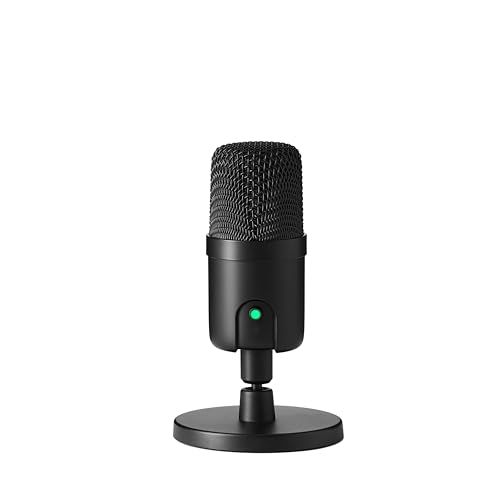Introduction
In the world of gaming, clear communication is vital, whether you’re coordinating strategies with teammates in a competitive match or entertaining an audience during a live stream. A high-quality gaming microphone can make all the difference in how your voice is heard and perceived. This guide explores the importance of gaming microphones, the different types available, key features to consider, and some top recommendations to enhance your gaming experience.
Why You Need a Gaming Microphone
A good gaming microphone is essential for several reasons:
1. Clear Communication
In multiplayer games, especially competitive ones, clear communication is critical. A quality microphone ensures that your voice is transmitted clearly to teammates, reducing the chances of misunderstandings during crucial moments.
2. Streaming and Content Creation
With the rise of platforms like Twitch and YouTube, many gamers have turned to streaming and content creation. A high-quality microphone is essential for producing professional-sounding audio in streams, videos, and podcasts. Good audio quality helps retain viewer attention and enhances the overall experience.
3. Voice Chat and Online Communities
Gaming often involves interacting with friends or online communities. A good microphone allows for clear and engaging conversations, making your gaming sessions more enjoyable and social.
Types of Gaming Microphones
When selecting a gaming microphone, it’s essential to understand the various types available. Here are the most common categories:
1. USB Microphones
USB microphones are among the most popular choices for gamers and streamers. They connect directly to your computer or console via USB, making them easy to set up and use.
- Pros:
- Plug-and-play functionality.
- Generally more affordable.
- Compact and portable designs.
- Cons:
- Limited audio quality compared to XLR microphones.
Ideal For: Casual gamers and streamers looking for a simple, budget-friendly solution.
2. XLR Microphones
XLR microphones are typically used in professional settings, offering superior audio quality. They require an audio interface or mixer for connectivity, which can add to the overall cost.
- Pros:
- Exceptional sound quality and clarity.
- Greater versatility with additional audio equipment.
- Cons:
- More expensive and complex to set up.
- Requires additional equipment (audio interface).
Ideal For: Professional streamers, podcasters, and those seeking top-tier audio quality.
3. Lavalier Microphones
Lavalier microphones, or lapel mics, are small, clip-on microphones often used in interviews and presentations. They can also be an excellent option for gamers who prefer hands-free communication.
- Pros:
- Discreet and lightweight.
- Allows for freedom of movement.
- Cons:
- May pick up background noise.
- Generally not as high-quality as USB or XLR mics.
Ideal For: Gamers who want a hands-free option or those who engage in video content creation while on the move.
4. Headset Microphones
Many gaming headsets come with built-in microphones. These are convenient for gamers who want an all-in-one solution without the hassle of multiple devices.
- Pros:
- Convenient and compact.
- Generally more affordable.
- Cons:
- Audio quality may not be as good as standalone microphones.
- Can be less comfortable during long gaming sessions.
Ideal For: Casual gamers who prioritize convenience and affordability.
Key Features to Consider
When shopping for a gaming microphone, consider these key features to ensure you select the right one for your needs:
1. Audio Quality
Look for a microphone that delivers clear, high-quality sound. For professional use, consider XLR microphones or high-end USB options that offer excellent audio fidelity.
2. Directional Pattern
Microphones come with various directional patterns (also known as polar patterns) that determine how they capture sound:
- Cardioid: Captures sound primarily from the front, reducing background noise.
- Omnidirectional: Captures sound from all directions, ideal for group settings.
- Bidirectional: Captures sound from the front and back, suitable for interviews.
Choose a microphone with a directional pattern that suits your gaming environment.
3. Build Quality
Durability is essential, especially if you plan to use your microphone frequently. Look for models made from high-quality materials that can withstand regular use.
4. Ease of Use
Consider how easy the microphone is to set up and use. USB microphones typically offer plug-and-play functionality, while XLR microphones may require additional equipment.
5. Additional Features
Some microphones come with additional features like built-in pop filters, gain control, or headphone outputs for real-time monitoring. These can enhance your experience and improve audio quality.

